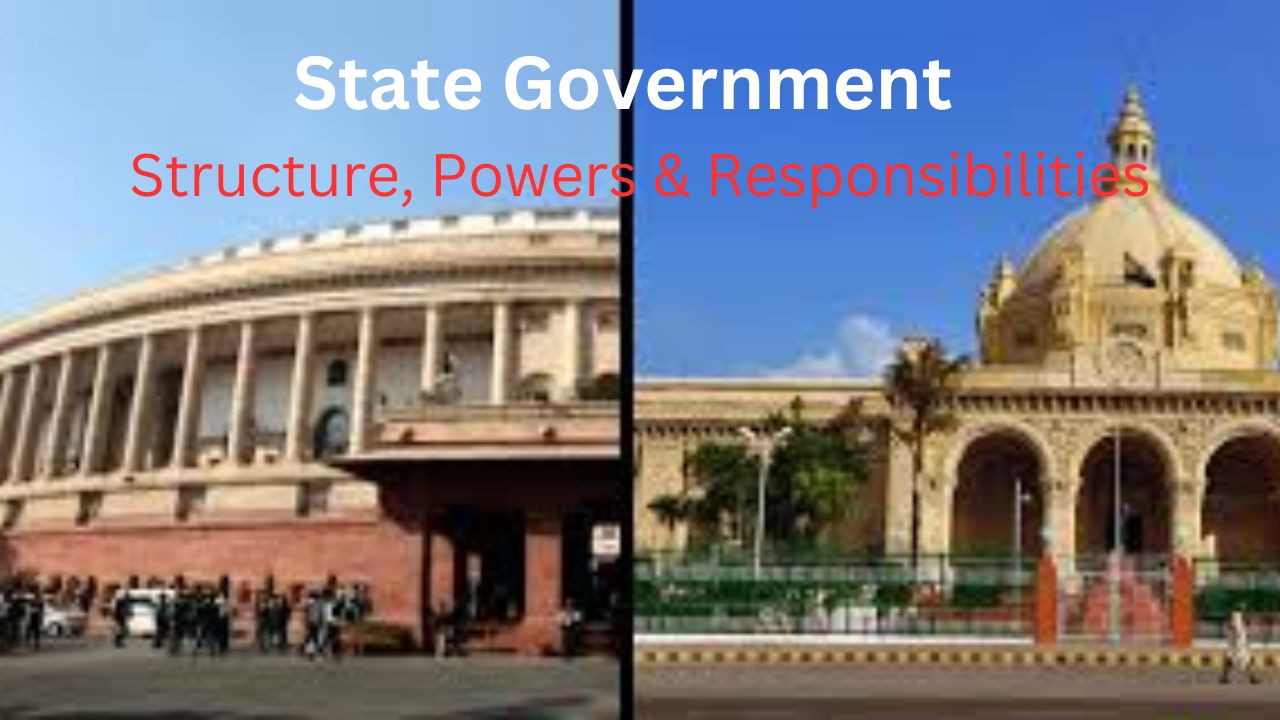State Government : Structure, Roles, Functions, Powers & Responsibilities
The state government occupies an eminent and central position in the political system of a state Articles 168 to 212 in part 6 of the Constitution deal with the state government.

Introduction of State Government: The constitution established a dual polity consisting of the Union at the centre and the state at the periphery. The state government on the other hand looks after matters of regional and local importance like public or agriculture local government and so on.
History of State Government
The State Government had introduced it in the Constituent Assembly in 1946 by the members of it. There is quasi-federalism in India where there is a normal division of powers under which states enjoy autonomy within their areas.
Read Also~Central Government: Definition, Structure, Roles and Responsibilities GOI
There is a need for national integrity and a strong Union government under exceptional circumstances. Supreme Court in Bommai Case laid down Federalism as a basic feature of the Indian Constitution.
Structure of State Government
Unicameral State
In the Unicameral State legislature, there is only one supreme house, the Legislative Assembly where the persons are elected by the people. It is where the laws are passed and checked there.
Bicameral State
It is a legislative body with two houses. It includes the Legislative Assembly and Legislative Council. The Legislative Assembly is the primary house, and the Legislative Council is the secondary house. India is one such example where there are two houses both at the union and at the state level from 6 of its 28 states.
In a bicameral legislature, the function is to administer, check and implement the laws that are shared between the two houses.
Composition of State Government
The legislative assembly of the state consists of representatives directly from the people based on a universal Adult Franchise.
The strength of the state assembly is from 500 to 60. The maximum strength is 500 and the minimum is 60. The purpose of holding direct elections to the state is to divide it into territorial constituencies.
The state Assembly is not a continuing chamber; its normal term is 5 years from the date of its first meeting after this general election. The expiration of the term of 5 years operates as an automatic resolution of the assembly and the governor authorised all the simulator’s anytime to pave the way for fresh elections.
Read Also~Chief Ministers: Role, Duties, Powers & Appointment Rule
Features of State Government
- Dual Polity There is a provision for dual polity in our constitution. Where a union is at the centre and a state at the periphery. States have the right to exercise their powers and make laws in their respective territorial areas.
- Matters state has to look at the matters of regional and local importance which include agriculture, health, local government, public order and animal husbandry.
- Written Constitution The Indian constitution is a written Constitution and its constitution. It has 470 articles and the 12th schedule which has a separation of structure, organisation pass and functions for both Central and state governments so that there should be no misunderstanding in future.
- Division of Powers The constitution divides the powers between centre and state through the Union list, state list and concurrent list in the 7th schedule. The state list has 59 subjects on which the state can make laws. The state can make laws on a concurrent list also.
- Rigid Constitution The Constitution is Rigid, and the division of powers is divided between the centre and the state. The amendment to the constitution is also rigid in that the state has almost equal powers to the centre for the functioning of its territorial area.
